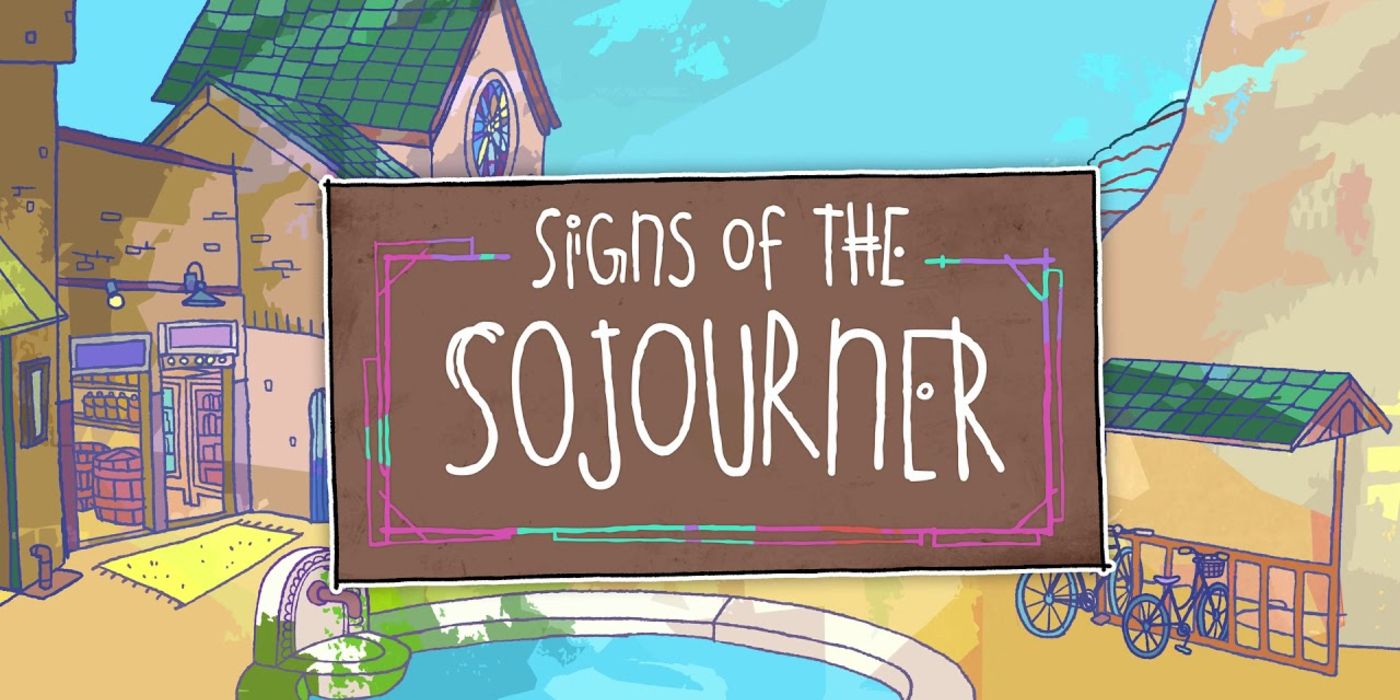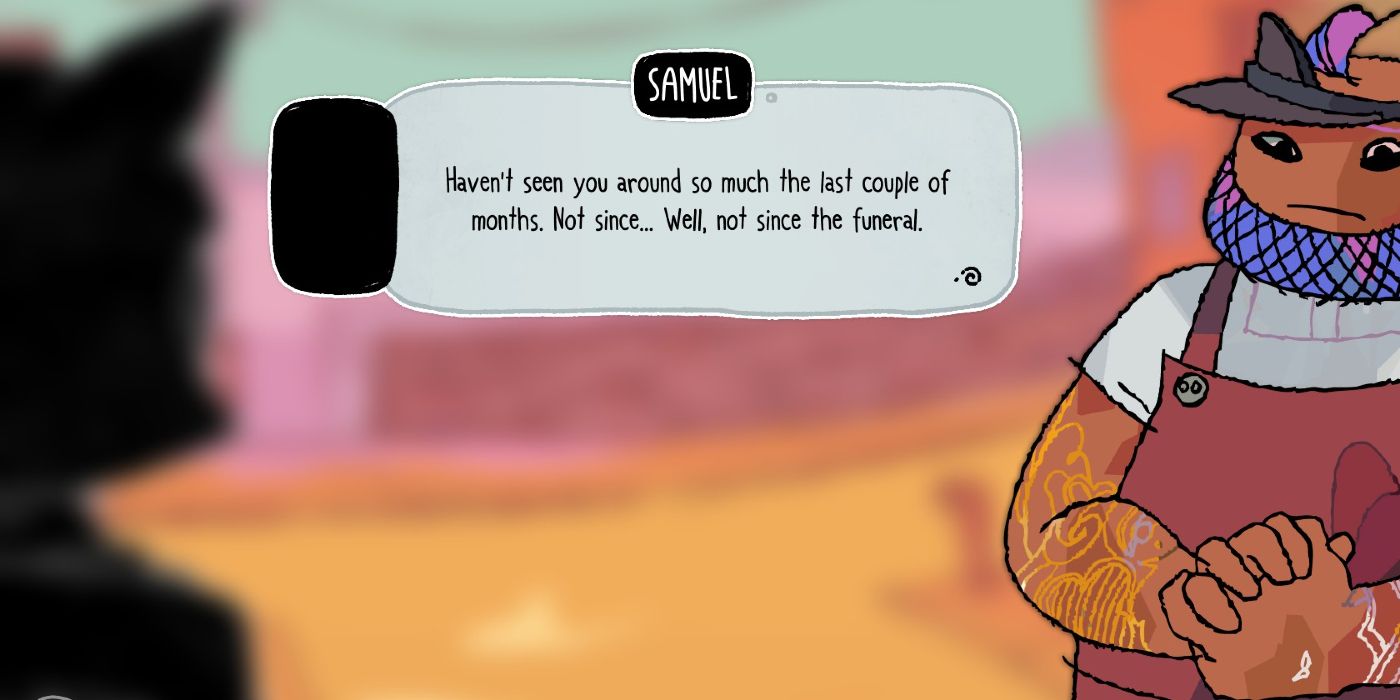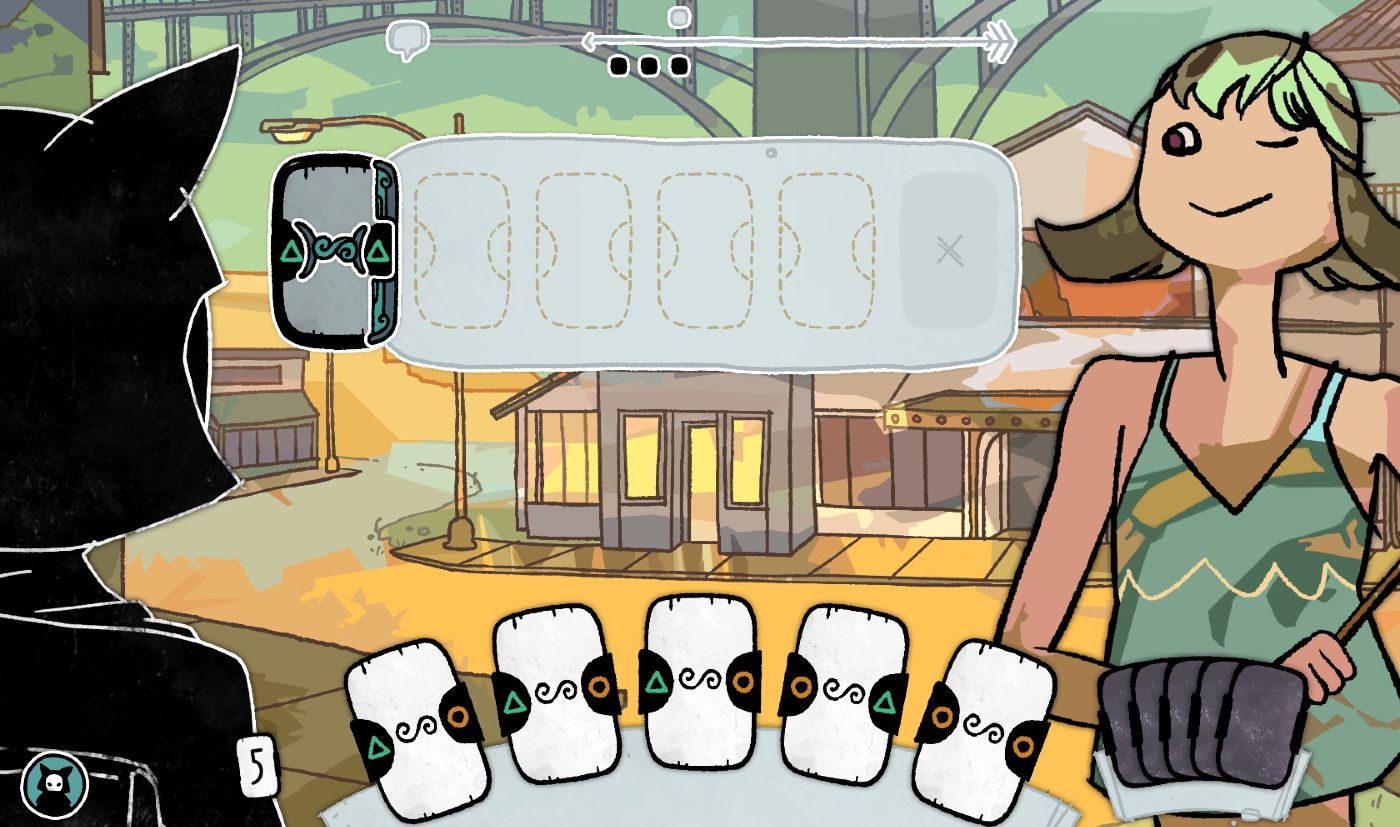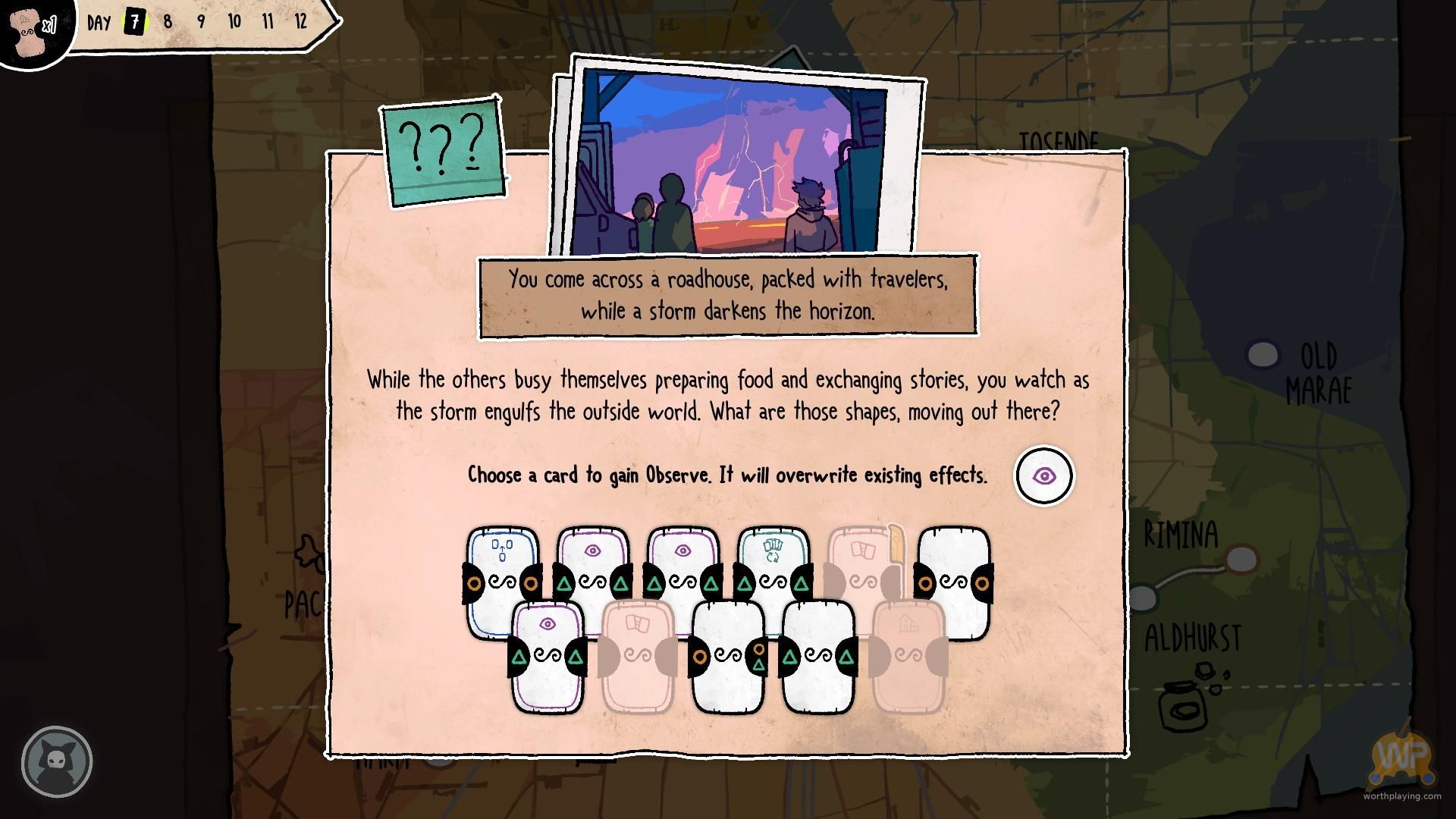Video games centered around cards aren't just synonymous with properties like Magic: The Gathering or Hearthstone anymore. Over the past several years, the deckbuilding sub-genre of card games has taken off, thanks in no small part to Slay The Spire, a title that boiled down the medium to its most appealing offerings: near-endless replayability alongside a blend of strategy, wit, and luck that makes for a compelling sales pitch. Most often, deckbuilding games have very tangible victory conditions, like completing floors of a dungeon or progressing through a storyline filled with war and violence.
Echodog Games' Signs Of The Sojourner is different. It's a game that is unshakable in its belief that there is more than one way to build a deck, and there are never any battles in the traditional sense throughout the game. Instead, Signs Of The Sojourner is a card game about growing up and becoming more mature, about the friends that get left behind as people change and the bonds that strengthen even as they threaten to break. It's an exhausting journey at times, and its gameplay mechanics aren't perfect, but Signs Of The Sojourner is a strong addition to the deckbuilding genre that fills a void that many fans likely didn't know existed.
At its core, Signs Of The Sojourner is essentially a visual novel wrapped in the guise of a deckbuilding game. There are strengths and weaknesses to this unique approach. Signs Of The Sojourner is striking visually, with graphics and imagery that feel welcoming even as the world gradually unfurls into something much scarier and threatening, though they're pretty simplistic and crude at times. The story, likewise, is malleable but compelling - less involved than the grand politics of some other single-player card games, and with no greater demon to slay at the end. That ends up being refreshing even as each choice and conversation reveals that not everyone can get along and, even if the protagonist wants to change themselves, there's not always the time or resources to do so.
The gameplay of Signs Of The Sojourner is made up of an incredibly simple pattern-matching card game. Cards will have different qualities on either side of them, and they're played alternating between the player and the character they're engaging with. Cards are laid out in a horizontal line that ranges between four and six slots wide, and if the two parties are able to match cards throughout the line, they clear a stage of dialogue. Clearing dialogue will unlock new routes for the player's caravan, which travels a resource-lite world to scavenge and set up trades, or new characters to converse with. Sometimes clearing dialogue doesn't have any real benefit - it's just getting to know someone better. Failing, likewise, isn't always the end of the world, though it often works in unseen ways to prevent the player from reaching a certain character's final exchange.
Where Signs Of The Sojourner succeeds with this premise is how compelling its dialogue is and how a simplistic system takes emotions and makes them a mechanic. Each symbol on a card corresponds to a range of emotions, and different characters respond well or play with specific ones. There is, to the best of our knowledge, simply no way to complete a game and satisfy everyone. The deck only changes by one card each dialogue, and the cards are restricted to ones played by the player's partner - which means success often leads to decks that only correspond to personality types a player has already encountered.
If the protagonist wants to change their outlook on life, they can, but it typically comes at a cost - a few lost dialogue opportunities while fleshing out the deck. Players are given a deck of ten cards and can only manipulate the deck to contain that many cards throughout the game, constricting resources massively. Each time Signs Of The Sojourner gives a player a card, it takes one away. It's a savvy connection between the game's thematic concerns - growing up and changing - and the replayability factor that makes deckbuilding games so fun. To see different characters and outcomes, different decks are required, meaning multiple playthroughs are a given.
That is also a weakness of Signs Of The Sojourner, however. No matter how deep each character is - and they appear in random orders, too, so not every beginning is the same - they do ultimately deliver the same dialogue and play out the same decks. After a few playthroughs, the early-going can be quite mundane, while the random events that help break up similarities between play sessions happen too infrequently.
Signs Of The Sojourner is also a frustrating game at its core. Sometimes, the deck just doesn't cooperate, regardless of how well built it is. Without a save function that lets players pick and choose their spots in the narrative, an hour-long session with a deliberate focus can totally fall apart on a whim. In a game like Slay The Spire, that's not a huge deal, as the narrative is less of a focus and more window dressing. For Signs Of The Sojourner and its crew of interesting survivors, it can be devastating missing out on a story beat that was basically the whole point of the run.
That's the biggest failing of Signs Of The Sojourner - that it aspires to innovate the genre and it does so without, perhaps, taking into consideration some of the more restrictive elements of deckbuilding games. Chance is meant to be cruel and the allegory for growing up is apt, but it's perhaps a little too punishing and a little too frustrating for a game that's actual gameplay is incredibly simple. There isn't much depth to cards and abilities and decks are pretty bare bones at ten cards, so without the customization options of other competitors, Signs Of The Sojourner can feel like a slog.
That isn't to say that Signs Of The Sojourner isn't good, however. It's a worthwhile pickup for fans of the genre and those who go in with the expectation that it just isn't the same kind of replayable that they might otherwise become accustomed to in deckbuilding titles. It's also a beautiful story at its core, one that is accentuated by hit-or-miss drawings and a sparse, compelling world. Signs Of The Sojourner is worth your time - just don't expect it to take up too much of it.
Signs Of The Sojourner releases on May 14, 2020 on Nintendo Switch, Mac, and PC. Screen Rant was provided with a Steam review code for the purposes of this review.




